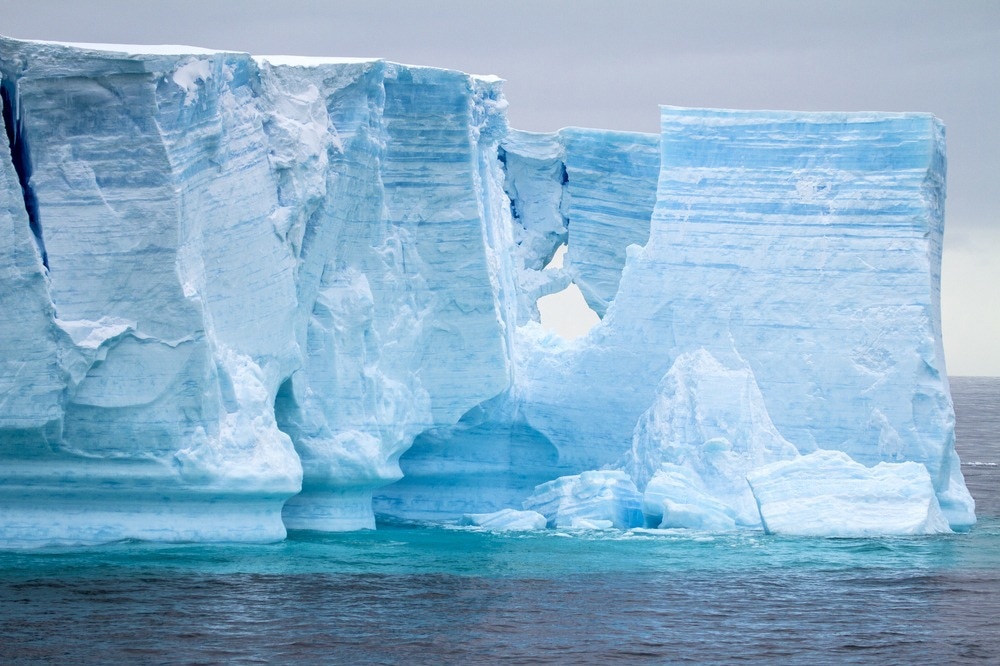The climate might theoretically be artificially impacted and cooled using so-called geoengineering methods. Bernese scientists have now researched whether it is possible to avoid the melting of the West Antarctic ice sheet by “dimming the sun” artificially. The findings show that artificial influence does not function without decarbonization and is fraught with risks.

Image Credit: Ion Mes/Shutterstock.com
Is there an urgent solution that can halt climate change? Geoengineering refers to technical methods of artificially influencing the climate. The majority of climate scientists, however, have been critical of them.
Investigators, guided by Johannes Sutter of the Climate and Environmental Physics Division (KUP) at the Institute of Physics and the Oeschger Center for Climate Research at the University of Bern, investigated the possibility of preventing the melting of the ice in West Antarctica by artificially modifying solar radiation in a study that was published in the journal Nature Climate Change. The researchers also caution against the unintended consequences of geoengineering.
Avoiding a Key Climate Tipping Point
The window of opportunity to limit the global temperature increase to below 2 degrees is closing fast, so it is possible that technical measures to influence the climate will be seriously considered in the future.
Johannes Sutter, Ice Modeling Specialist, University of Bern
That is why, he claims, theoretical models must be used to understand the effects and risks of “solar radiation management.” Solar Radiation Management (SRM) describes the methods of reducing solar radiation to keep the Earth cooler.
One of the primary reasons for the increased interest in geoengineering is the desire to avoid tipping points where the climate could abruptly and irreversibly change. The melting of the West Antarctic and Greenland ice sheets, as well as the resulting meter-high sea level rise, are among them.
Observations of ice flows in West Antarctica indicate that we are very close to a so-called tipping point or have already passed it, with our study, we therefore wanted to find out whether a collapse of the ice sheet could theoretically be prevented with solar radiation management.
Johannes Sutter, Ice Modeling Specialist, University of Bern
Artificially Dimming the Sun
Sutter and his coworkers have specifically investigated what would eventuate if so-called aerosols—suspended particles in a gas—introduced into the stratosphere succeeded in obstructing solar radiation from the earth, a sort of sun dimming. So far, studies have concentrated on the global effects of solar radiation management (SRM).
The Bern research is the first to demonstrate the impact such a measure would have on the Antarctic ice sheet using ice model simulations. The research highlights the possible transformation of the ice sheet under various scenarios for future greenhouse gas emissions and produces distinct results: The collapse of the West Antarctic Ice Sheet could be somewhat delayed but not prevented if emissions do not stop and the SRM happens in the middle of this century.
SRM deployed by the middle of the century could function as an “effective tool” to delay or even halt the collapse of the ice sheet in a scenario with moderate emissions.
The model calculations show that SRM is most effective when it is implemented early and in combination with ambitious climate mitigation strategies. But, as the study's authors point out, “our simulations show that the most effective way to prevent long-term collapse of the West Antarctic Ice Sheet is rapid decarbonization.”
The likelihood of an ice sheet remaining stable over a longer period of time is highest if greenhouse gas emissions are reduced to zero “without delay.”
Possible Side Effects Still Hardly Studied
But, in practice, how should one imagine the sun dimming? According to Johannes Sutter, a fleet of ultra-high-flying planes would have to disperse millions of tons of aerosols in the stratosphere.
However, this technological intervention in the climate would have to be sustained indefinitely and for centuries. If the intervention was halted while the greenhouse concentration in the atmosphere remained high, the global temperature would rapidly rise by several degrees.
According to Johannes Sutter, the impacts of such a termination shock are only one of the potential dangers presented by SRM. The potential side effects, which range from a shift in the monsoon regime to changes in ocean and atmospheric circulation, are still understudied. Acidification of the oceans would also continue. Critical voices also warn about the political and social consequences of using techniques like solar dimming, which could cause climate protection measures to be slowed or even prevented.
Geoengineering would be another global experiment and a potentially dangerous human intervention in the climate system, which should in any case be prevented according to Article 2 of the UN Framework Convention on Climate Change.
Thomas Stocker, Study Co-Author and Professor, Climate and Environmental Physics, University of Bern
Journal Reference
Sutter, J., et al. (2023). Climate intervention on a high-emissions pathway could delay but not prevent West Antarctic Ice Sheet demise. Nature Climate Change. doi.org/10.1038/s41558-023-01738-w.